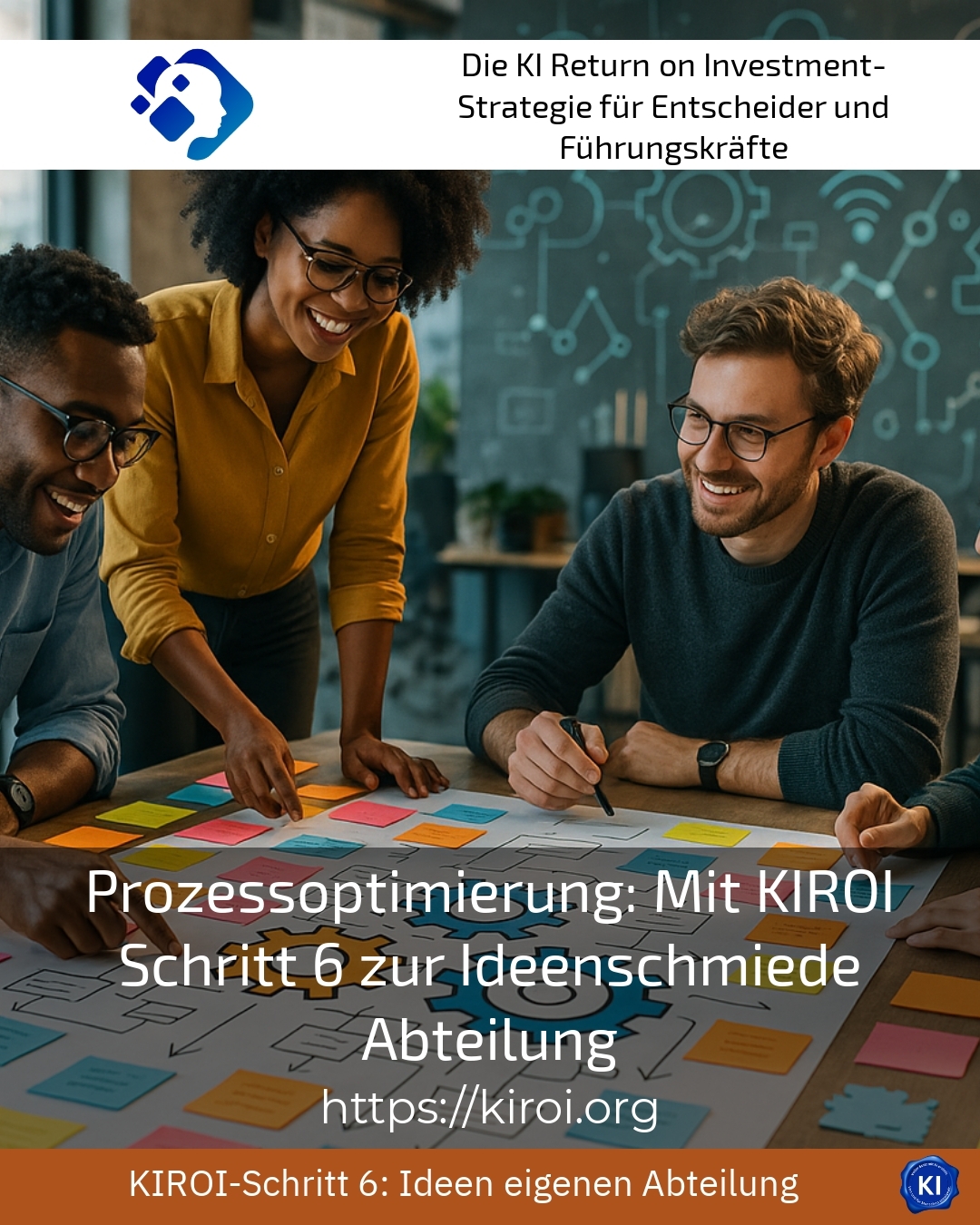Targeted process optimisation is indispensable for companies today. It helps to make processes more efficient and utilise existing resources better. Step 6 on the way to the so-called think tank department is particularly interesting, as this is where innovative approaches are developed to continuously improve processes and realise new potential. KIROI provides valuable impetus and methods to support this process, addressing both established and new challenges.
How process optimisation paves the way to the think tank
Process optimisation means more than just eliminating the superfluous. It involves the targeted analysis and adaptation of work and business processes in order to sustainably increase efficiency and quality. In step 6, focussing on the think tank department, creative solutions are generated that go far beyond simple standard processes.
In the automotive industry, for example, teams at KIROI are observing how they are eliminating bottlenecks in production through targeted idea generation as part of process optimisation. For one customer, for example, the lead time in assembly was reduced by 15 %.
In the area of logistics, too, it has been shown that when employees actively contribute suggestions in workshops, satisfaction increases and processes are organised more dynamically. Staff shortages are thus better cushioned, while at the same time the quality of goods distribution increases.
In the service sector, process optimisation in the think tank department is key to automating administrative routines and improving individual customer service. One example of this is an insurance company that worked with KIROI and developed a digital application process that shortened the processing time by several days.
How KIROI provides concrete support
KIROI systematically guides companies through step 6 of process optimisation, using tried and tested methods from change management and idea generation. For example, KIROI encourages the introduction of regular creative workshops in which different departments come together to solve innovation blockades.
Another example comes from food production, where KIROI helped to establish a think tank in which employees continuously contribute suggestions for improving quality controls. This resulted in automated monitoring systems that recognise quality deviations at an early stage.
In the technical area, KIROI introduced workshops that optimise the exchange between the development and production departments. This shortened development cycles and enabled adjustments to be implemented more quickly, which significantly reduced the time to market.
BEST PRACTICE with one customer (name hidden due to NDA contract) The introduction of KIROI Step 6 created an interdisciplinary think tank. This enabled a structured collection and evaluation of ideas for improvement. As a result, processes in production were not only streamlined but also innovatively expanded, leading to measurable increases in efficiency.
Practical tips for successful process optimisation with a focus on think tanks
Process optimisation in the think tank department requires clear structures: firstly, responsibilities should be defined and fixed time frames set for collecting ideas. This is followed by the documentation of all suggestions with subsequent feedback to the employees.
- In the IT sector, for example, teams rely on digital platforms where proposals are submitted and evaluated transparently.
- In the skilled trades, an open culture of dialogue often helps to recognise hidden problems and promote creative solutions.
- In production, it is worth trying out small pilot projects in order to test new ideas directly on a manageable scale.
The exchange between departments should be actively encouraged in order to break down silo thinking and establish a holistic approach to processes. In addition, continuous monitoring of the measures introduced is recommended so that adjustments can be introduced promptly.
Avoiding typical stumbling blocks
Many companies report difficulties in implementing process optimisation because ideas are either not taken seriously or not pursued systematically. KIROI provides support here by creating clear communication channels and supporting commitment at all levels.
It is equally important not to introduce any hasty changes, but to proceed in small steps. Integrating employees into decision-making processes ensures that the changes are accepted and actively supported.
My analysis
Targeted process optimisation, particularly with a focus on the think tank department, opens up a wide range of opportunities for companies. It not only helps to recognise opportunities for improvement, but also creates an environment in which innovation and continuous improvement can flourish. KIROI offers valuable impulses and methodical support that help to develop ideas in a structured way and put them into practice. In this way, process optimisation becomes a dynamic, sustainable instrument that can strengthen the company's success.
Further links from the text above:
IPH Hannover: Process optimisation - definition, objectives, phases, procedure
Lexware: Process optimisation - All about the topic
Personio: Process optimisation - how it works + practical example
KEPServerEX: Process optimisation - definition and implementation
Wikipedia: Process optimisation
The process manager: process optimisation definition and application
Peras: Process optimisation - definition, methods & practical examples
iGrafx: What is process improvement? Definition and examples
IHK Lippe zu Detmold: Process optimisation in the company
THA: Process optimisation - focus and methods
For more information and if you have any questions, please contact Contact us or read more blog posts on the topic Artificial intelligence here.















